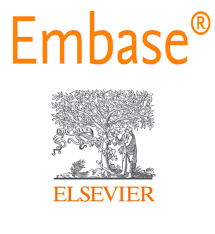MANGNETIC RESONANCE IMAGING IN EVALUATION OF LOWBACK ACHE OF NON TRAUMATIC ETIOLOGY
Keywords:
Low Backache, MRI Spine, Degenerative Disc Disease, Pott’s Spine, Sacroiliitis, Spinal Canal Stenosis, Neoplastic Spine Lesions, Modic Changes.Abstract
Background: Low backache is one of the most frequent complaints in clinical practice, particularly among individuals engaged in occupations involving prolonged standing, sitting, or improper posture. In India, it contributes significantly to the socioeconomic burden. MRI has emerged as the investigation of choice due to its superior ability to visualize spinal and paraspinal soft tissues. Aim and Objectives: To evaluate MRI findings in patients with low backache of non-traumatic etiology. To distinguish between various pathological causes and levels of spinal involvement. To assess the correlation between clinical diagnosis and MRI findings, including the differentiation of infective causes, follow-up of treated Pott’s spine, and grading of disc prolapse and sacroiliitis. Materials and Methods: A descriptive observational study was conducted over 6 months involving 100 patients with low backache undergoing MRI at the Department of Radio-Diagnosis, Alluri Sitaramaraju Medical College, Eluru. Patients with a history of spinal surgery, trauma, or metallic implants were excluded. Imaging was performed using a 1.5T SIEMENS MRI scanner. Standard sequences included T1WI, T2WI (sagittal and axial), STIR, and contrast-enhanced studies where needed. Results: Degenerative changes were the most common finding (87%), particularly disc bulges, followed by disc protrusion and endplate changes. The L4–L5 and L5–S1 levels were most frequently involved. Infective etiologies were seen in 16.26% of cases, with tubercular spondylitis being predominant. Neoplastic causes (8.94%) included metastases, multiple myeloma, and sacral chordoma. MRI was highly effective in evaluating sacroiliitis, spinal canal stenosis, and congenital anomalies like myelomeningocele and AVM. Conclusion: MRI is the imaging modality of choice for evaluating non-traumatic low backache. It provides detailed anatomical and pathological information that is essential for diagnosis and management. Degenerative changes were the most common cause, followed by infections and neoplasms. MRI was particularly valuable in assessing Pott’s spine, detecting early sacroiliitis, and evaluating spinal tumors.
.png)









